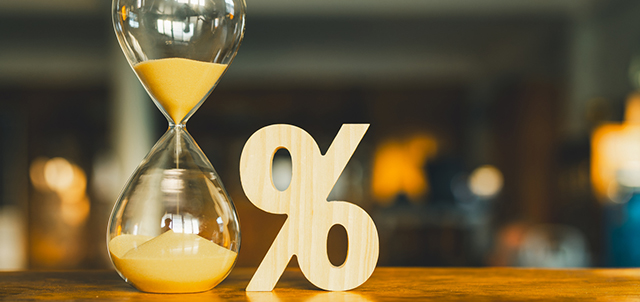Understanding Negative Interest Rates

This year it may seem like negative interest rates are all the rage.
The European Central Bank, which first introduced negative interest rates in 2014, announced this past spring it was further lowering its bank deposit rate to -0.4 percent. The central banks of three European countries also have negative interest rates and earlier this year, the trend jumped to Asia, where the Bank of Japan also slashed rates below zero.
In the U.S., meanwhile, Federal Reserve chairwoman Janet Yellen told Congress in February she wouldn't take negative interest rates "off the table," though since then, improving economic conditions in the U.S. has shifted talk to the possibility of rate hikes rather than rate cuts.
Let's take a closer look at how negative interest rates work and their impacts on consumers and investors.
What Are Negative Interest Rates?
To understand what a negative interest rate is, it’s important first to understand there are two types of interest rates — nominal and real. A nominal interest rate is the rate paid to depositors and debt holders before accounting for inflation. A real interest rate is the rate of return that depositors and debt holders receive after inflation is factored in (more on this later).
Typically, when a customer has a deposit account at a bank, the bank pays the customer a nominal interest rate. For instance, a bank may advertise a savings account that offers a customer a 1 percent annual yield on their money -- that 1 percent is the nominal interest rate. But when the nominal interest rate is negative, payment flows the other way: the customer pays the bank interest on his or her deposit — essentially, the customer is paying the bank to hold his or her money.
A real interest rate can be determined by subtracting the rate of inflation from the nominal interest rate. For instance, if the rate of inflation is at 1 percent and an investor's nominal interest rate is 3 percent, her real interest rate would effectively be 2 percent.
We can illustrate this with a very simple example: An investor may become $3 richer because her savings have grown from $100 to $103 over the course of a year thanks to a 3 percent nominal interest rate. But she may feel only $2 richer because a basket of goods that she'd like to purchase has increased in price from $100 to $101 thanks to 1 percent inflation, resulting in a 2 percent real interest rate.
It is not uncommon for a real interest rate to be negative when a nominal interest rate is positive. For instance, if the investor in the example above faced 4 percent inflation and the nominal rate was still 3 percent, she would have faced a real interest rate of -1 percent.
How Do Negative Nominal Rates Come About?
Countries’ central banks set negative nominal rates for the purpose of encouraging lending by banks and spending by businesses and consumers. Here’s how it works:
Commercial banks are required to hold money on reserve at central banks in an amount related to a bank’s balance sheet. A bank may also place excess reserves in the central bank as a safe store for the cash. Typically, central banks pay commercial banks interest on their deposits, but when central banks set a negative nominal rate, the commercial banks, in effect, must pay the central banks to hold their money.
The commercial banks, in turn, may pass on the impact of negative nominal rates to their customers by either lowering the interest rates paid to depositors, or, in extreme cases, charging a negative interest rate to their own depositors. Depositors who are seeing little growth in their savings thanks to low interest rates (or, in rare cases, no growth thanks to negative rates) may be more likely to spend their money than save it.
However, it’s worth noting that in reality, negative interest rates don’t always successfully encourage spending. The Wall Street Journal recently reported that consumers in Germany and Japan were saving more despite negative interest rates — a behavior some experts attributed to the idea that negative rates actually undermined consumers’ confidence about their countries’ economies.
In addition, because negative interest rates make it relatively expensive for banks to store excess reserves at a central bank, they are incentivized to lend out the money instead. Because commercial bank interest rates are affected by central bank interest rates, bank customers could see loans with lower interest rates or, in extreme cases, negative interest rates, meaning that borrowers would essentially be paid for taking out loans.
How Have Existing Negative Interest Rates In Europe Affected Consumers And Businesses There?
A survey of European banks by the European Central Bank shows that access to credit and demands for loans by businesses and consumers is, indeed, improving. There have also been scattered reports of mortgage borrowers seeing negative interest rates on their home loans. In Denmark, for instance, one homeowner told The Wall Street Journal that his bank paid him $38 in quarterly interest on his mortgage.
Perhaps the most alarming question for consumers overseas is whether banks would pass on negative interest rates to customers holding deposit accounts. If they did, customers would have to pay monthly interest rates on their savings. For now, however, such situations have been limited to businesses that hold deposit accounts with banks, not individual consumers.
Last year, for instance, a Swiss bank passed on negative interest rates to institutional clients, such as pension funds, while a Danish bank serving corporate clients also passed on a negative rate on deposit accounts. Still, banks in other countries have refrained from passing on negative interest rates to consumers because banks know that consumers could always choose to withdraw their funds and hold them in cash instead.
Should We Expect Negative Interest Rates In The U.S.?
It depends on whether you're referring to negative nominal interest rates or negative real interest rates.
Negative real interest rates are something the country has already experienced, such as when inflation exceeded the yield on the 10-year Treasury note last year.
It’s unlikely, however, that the U.S. will see negative nominal rates in the near future. In her most recent public comments, Janet Yellen said she expected that the Federal Reserve would eventually raise interest rates. If the U.S. labor market continues to strengthen and inflation makes progress in hitting the Fed’s target, “further gradual increases in the federal funds rate are likely to be appropriate,” she said, according to the New York Times.
How Do Negative Interest Rates Abroad Affect American Investors?
Negative interest rates can result in negative bond yields. Yet some investors are nonetheless willing to buy these bonds, especially if they're government bonds. Why? A negative-yielding government bond may still offer more stability than other, riskier investments. A ten-year German government bond, for instance, recently featured a yield of -0.03 percent. An investor might view a loss of 0.03 percent of the initial investment as more attractive than a far greater percentage loss on a more volatile investment over the same period, especially if the investment — such as a bond — is something they’re able to sell with ease when they’re in need of liquidity.
For those focused on equities, negative interest rates abroad may be unwelcome news. Critics say that negative interest rates are contributing to disappointing earnings from European banks.
For many individual investors, the areas where they’re most likely to see exposure to negative interest rates is through mutual funds or index funds with international holdings. But Dan Sichel, a former senior Fed official who is now professor of economics at Wellesley College, said that consumers should consider negative interest rates as more of a symptom rather than as a problem.
If a country has instituted negative interest rates, that’s a sign that its economy is under stress and that’s something an investor may want to consider when making decisions regarding investments in that country.
Even if negative interests can help a country’s flagging economy, Sichel added, they “don’t have unlimited strength.”
To learn whether a fund you’re invested in has exposure to companies in countries with negative rates, you’ll need to do your homework or talk with your financial professional.





